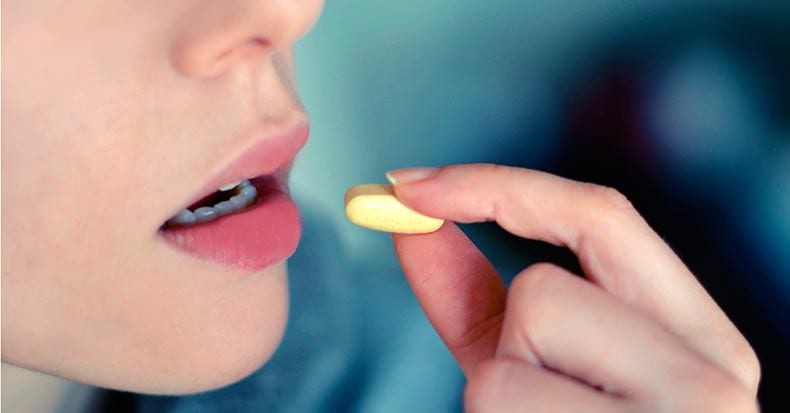Statistics suggest that low back pain (LBP) will plague most of us at some point in our lives, if it hasn’t already. Most healthcare professions that manage patients with low back pain focus on pain management. In fact, studies have reported that 67% of patient satisfaction is driven by pain elimination. One of the most common strategies for reducing pain is managing inflammation. The “easiest” way to do this (according to the many TV commercials and magazine advertisements) is to take one of the many non-steroidal anti-inflammatory drugs (NSAIDs) such as Ibuprofen (Advil, Nuprin), Piroxicam Flurbiprofen, and Indomethacin. Let’s take a closer look to see if this is a good or bad idea!
In a March 2015 article, researchers investigated the use of NSAIDs between 1993 and 2012 in patients who had fractures that failed to heal, technically called “non-union fractures.” They found that non-union fractures increased during years when NSAID use was increasingly recommended for patients with fractures and dropped in years when NSAID use declined. This isn’t the first study to report poor fracture healing results from NSAIDs when they’re used as the primary form of pain relief and in fact, studies on this subject date back to the early 1990s. So how does this equate to LBP? Most directly, fractures are one of the many causes of LBP, so for that population, the answer is clear. However, LBP is much more commonly caused by sprains (ligament injuries) and strains (muscle/tendon injuries), as well as cartilage injury. Here too, studies show that the healing rate of sprains, strains, and cartilage is also delayed when NSAIDs are used as the primary pain relief approach. This healing delay is reportedly due to NSAIDs’ inhibition of “proteoglycan synthesis,” a component of ligament and cartilage tissue regeneration and repair. NSAIDs also inhibit release of prostaglandins (especially prostaglandin E2), which is needed for tissue repair. These effects are ESPECIALLY observed with long-term use, but recent studies show injured athletes are best off NOT taking NSAIDs AT ALL as these drugs delay the healing process and thus the athlete’s ability to return to their sport.
In a January 2015 study, researchers criticized the common use of NSAIDs in elderly patients for the treatment of non-cancerous pain. They found 75% of the elderly population studied was prescribed NSAIDs which, in retrospect, the researchers determined to be inappropriate! Because NSAIDs interfere with healing, the net effect is an ACCELERATION of osteoarthritis and joint deterioration! In 1995, a North Carolina School of Medicine study compared four groups of patients with soft tissue injuries (tendon strains): Group 1 received NO treatment (control group); Group 2 received exercise only; Group 3 received exercise AND Indomethacin; and Group 4 received Indomethacin only. At 72 hours post-injury, ONLY the exercise group had an INCREASE in prostaglandins (E2 particularly – necessary for healing). This effect was even more profound at 108 hours after injury. The research team also found DNA synthesis in the fibroblasts (an important part of the repair mechanism) was greatest in the exercise group and was completely lacking in the NSAID-only group.
